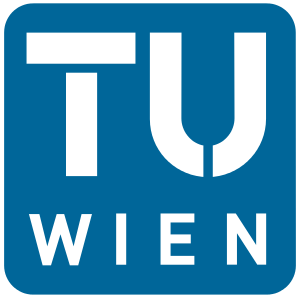Publications
List of Publications
Business Informatics Group, TU Wien
Model Transformation in Practice Using the BOC Model Transformer
 Gerhard Kramler
Gerhard Kramler
Murzek, M., Kappel, G., & Kramler, G. (2005). Model Transformation in Practice Using the BOC Model Transformer. In Model Transformation in Practice. Workshop “Model Transformation in Practice” at MoDELS2005, Montego Bay, Jamaica, Non-EU. http://hdl.handle.net/20.500.12708/51260
Kühn, H., & Murzek, M. (2005). Modelling: From Craftsmanship to Automation. In Proceedings of the 4th International Conference on Perspectives in Business Informatics Research (pp. 57–66). http://hdl.handle.net/20.500.12708/51263
Model driven development of inter-organizational workflows
 Gerhard Kramler
Gerhard Kramler Werner Retschitzegger
Werner RetschitzeggerKeywords:
Astract: The rise of the web has spurred automation of cooperation among organizations.
Inter-organizational workflows support such cooperations in a way similar to traditional intra-organizational workflows that support business processes within an organization.
The distinct characteristics of inter-organizational workflows, such as heterogeneity and autonomy of the participating software systems, has lead to the development of several new XML-based technologies supporting inter-organizational cooperation. These technologies, however, introduce additional complexity into the development of inter-organizational workflows.
Model driven development is an approach to master these complexities by using higher-level models as main development artifacts.
In the model driven architecture (MDA), UML can be employed as common modelling language for models at various levels of abstraction and various technologies.
The goal of this thesis is to exploit the application of MDA for model driven development of inter-organizational workflows. In this respect, several contributions are made. First, a survey of current XML-based technologies is given, discussing the commonalities and differences of the various languages and identifying requirements on any modelling language supporting them as target technologies. Second, an extension of UML for platform-specific modelling of XML documents is defined, specifically addressing the problem of round-trip engineering. Third, different ways of extending schema specifications for XML documents are investigated, addressing the lack of expressiveness of XML schemas as compared to UML models.
Kramler, G. (2004). Model driven development of inter-organizational workflows [Dissertation, Technische Universität Wien]. reposiTUm. https://resolver.obvsg.at/urn:nbn:at:at-ubtuw:1-12159
Business Collaboration Framework: Interoperability on Top of Web Services
 Birgit Hofreiter
Birgit Hofreiter Klaus-Dieter Naujok
Klaus-Dieter Naujok
Hofreiter, B., Naujok, K.-D., & Huemer, C. (2004). Business Collaboration Framework: Interoperability on Top of Web Services. Proceedings for the Final Conference of the EU 5. Rahmenprogramm-Project FOODTRACE, EU, EU. http://hdl.handle.net/20.500.12708/85230
Keywords:
Astract: Increasingly more data is becoming available on the Web, estimates speaking of 1 billion documents in 2002. Most of the documents are Web pages whose data is considered to be in XML format, expecting it to eventually replace HTML, the current lingua franca of the Web, e.g., by XHTML.
A common problem in designing and maintaining a Web site is that data on a Web page often replicates or derives from other data, the so-called base data, that is usually not contained in the deriving or replicating page. Two properties of Web sites account for this situation. First, the hypertext structure of a Web site not necessarily coincides with the structure of its underlying conceptual domain model, thus it may be necessary to present a single data item on several pages. Second, the content of pre-generated Web pages is often drawn from legacy systems, usually relational databases. In this case Web pages replicate data items from databases.
Consequently, replicas and derivations become inconsistent upon modifying base data in a Web page or a relational database. For example, after modifying a product's price in the database, already pre-generated Web pages offer the product at an out-dated price.
Or, after assigning a thesis to a student and modifying the Web page that describes it in detail, the thesis is still incorrectly contained in the list of offered thesis, missing in the list of ongoing thesis, and missing in the advisor's teaching record.
The thesis presents a solution by proposing a combined approach that provides for maintaining consistency of data in Web pages that (i) replicate data in relational databases, or (ii) replicate or derive from data in Web pages. Upon modifying base data, the modification is immediately pushed to affected Web pages. There, maintenance is performed incrementally by only modifying the affected part of the page instead of re-generating the whole page from scratch.
The proposed approach provides for consistent, up-to-date Web pages any time. It is efficient by providing incremental page maintenance techniques, generic by maintaining consistency of XML data in general, flexible by reacting to modifications in Web pages of other businesses, transparent by maintaining a business' autonomy in managing its data, open by allowing future extensions to be built on top of it, and extensible by enabling the integration of arbitrary legacy systems.
Bernauer, M. (2004). Maintaining consistency of data on the web [Dissertation, Technische Universität Wien]. reposiTUm. https://resolver.obvsg.at/urn:nbn:at:at-ubtuw:1-10948
B2B Protocol Specification by Example Using WSDL and ebXML
 Martin Bernauer
Martin Bernauer Gerhard Kramler
Gerhard Kramler
Bernauer, M., Kappel, G., & Kramler, G. (2003). B2B Protocol Specification by Example Using WSDL and ebXML. http://hdl.handle.net/20.500.12708/32931
Representing XML Schema in UML - A UML Profile for XML Schema
 Martin Bernauer
Martin Bernauer Gerhard Kramler
Gerhard Kramler
Bernauer, M., Kappel, G., & Kramler, G. (2003). Representing XML Schema in UML - A UML Profile for XML Schema. http://hdl.handle.net/20.500.12708/32941
Ubiquitous Web Application Development - A Framework for Understanding
 A. Finkelstein
A. Finkelstein A. Savigni
A. Savigni Werner Retschitzegger
Werner Retschitzegger Eugen Kimmerstorfer
Eugen Kimmerstorfer Wieland Schwinger
Wieland Schwinger Th. Hofer
Th. Hofer Birgit Pröll
Birgit Pröll Ch. Feichtner
Ch. Feichtner
Finkelstein, A., Savigni, A., Kappel, G., Retschitzegger, W., Kimmerstorfer, E., Schwinger, W., Hofer, Th., Pröll, B., & Feichtner, Ch. (2002). Ubiquitous Web Application Development - A Framework for Understanding. In Proceedings of the 6th World Multiconference on Systemics SCI) (pp. 431–438). International Institute of Informatics and Systemics. http://hdl.handle.net/20.500.12708/176130
A unified peer-to-peer database framework for xqueries over dynamic distributed content and its application for scalable service discovery
 Wolfgang Hoschek
Wolfgang Hoschek
Hoschek, W. (2002). A unified peer-to-peer database framework for xqueries over dynamic distributed content and its application for scalable service discovery [Dissertation, Technische Universität Wien]. reposiTUm. http://hdl.handle.net/20.500.12708/178880

